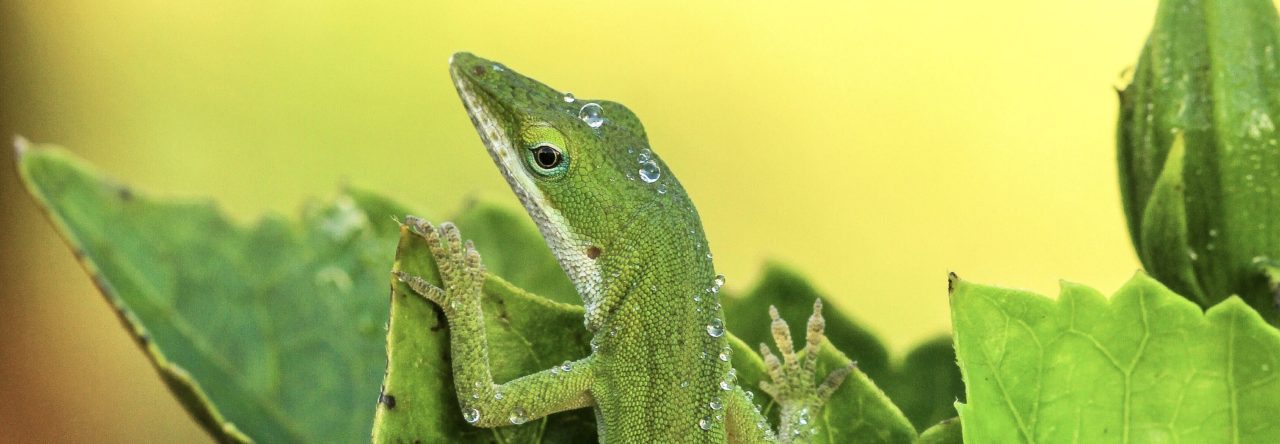Rand examined resource partitioning by seven Anolis species in Puerto Rico. Because of their general ecological similarity, Rand hypothesized that the anole species in Puerto Rico could only coexist if they had evolved (either in sympatry or allopatry) to partition available resources.
Morphologically, based on color, size, and body shape, he divided these seven species into 3 distinct groups: (1) Anolis evermanni and A. stratulus, (2) Anolis gundlachi and A. cristatellus, and (3) Anolis krugi, A. pulchellus and A. poncensis. These three groups would later be classified into the trunk-crown, trunk-ground, and grass-bush ecomorphs, respectively, on the basis of their similarity in habitat use, morphology, and behavior.
Rand showed habitat use partitioning among the species along two habitat axes: structural and climatic. He found that individuals of species that overlapped geographically divided the structural habitat, utilizing different perch heights and diameters. For example, A. evermanni, A. gundlachi, and A. krugi (all different ecomorphs) can be found in the same forest but the species use very different perches. In contrast, within an ecomorphological class (where individuals use similar perches), partitioning takes place along the climatic axis. For example, A. gundlachi and A. cristatellus, both trunk-ground ecomorphs, do not overlap in space. A. gunlachi occupies the shady forest while A. cristatellus inhabits sunny open fields and roadsides alongside the forest.
Rand’s paper is an Anole Classic for several reasons. First, by describing patterns in ecology, morphology, and behavior, this work helped set the stage for the ecomorph concept that Ernest Williams would coin in 1972. Second, Rand described two axes that explain a great deal of the diversity in habitat use by anoles. Third, it was the first paper to include perch diameter, in addition to perch height, as a descriptor of Anolis habitat use. Perch diameter has figured heavily in many subsequent studies of Anolis evolution as differences in perch diameter appear to drive differences in limb morphology among species. Last, Rand’s Figure 1 likely influenced Williams’s famous axes-of-diversification figure (Williams, E.E. 1983. Ecomorphs, faunas, island size, and diverse end points in island radiations of Anolis. In Lizard Ecology: Studies of a Model Organism. Eds. R.B. Huey, E.R. Pianka, and T.W. Schoener. Harvard University Press).















